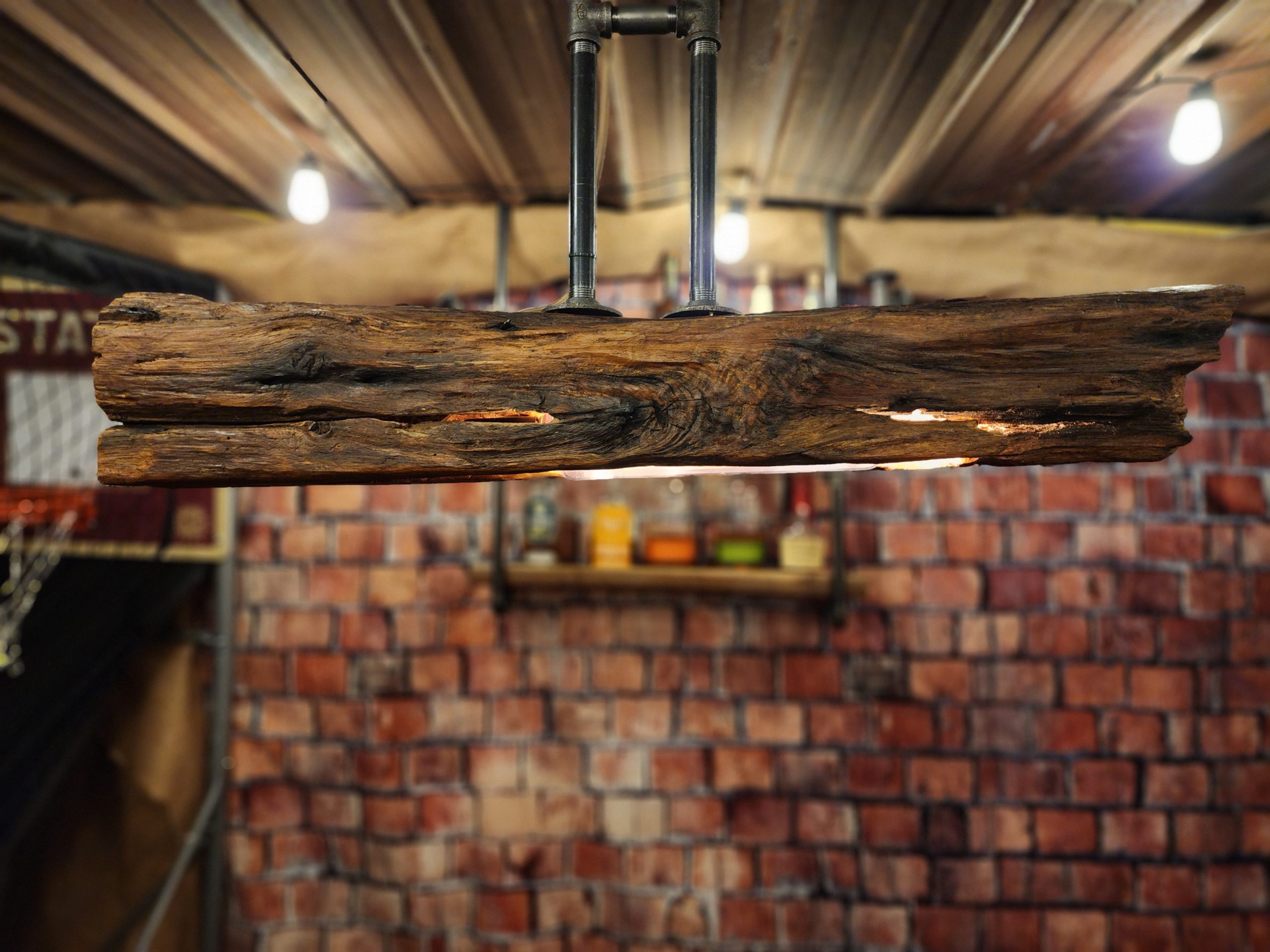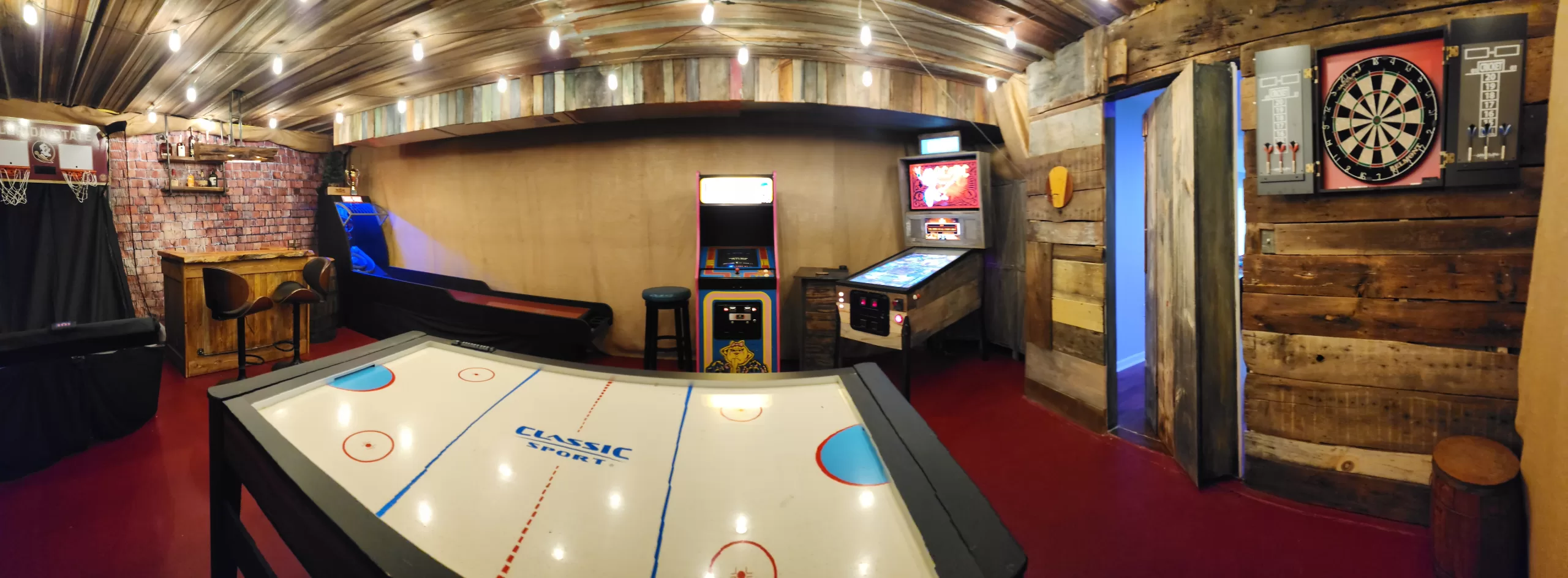DIY Basement Bar

Board Foot Calculator.
How to use a Board Foot Calculator
A board foot calculator is a tool used to estimate the total volume of lumber in a board or a stack of boards. A board foot is a unit of measurement for lumber that measures the volume of a board that is 1 inch thick, 12 inches wide, and 1 foot long.
To calculate the board footage of a piece of lumber, you need to know the length, width, and thickness of the board, and then multiply those dimensions together and divide by 144 (the number of square inches in a board foot). For example, a board that is 2 inches thick, 6 inches wide, and 8 feet long would have a board footage of:
(2 inches x 6 inches x 96 inches) / 144 = 8 board feet
A board foot calculator can simplify this calculation by allowing you to enter the dimensions of the board and automatically calculating the board footage. Some board foot calculators may also allow you to enter the number of boards in a stack and calculate the total board footage for the entire stack.
Board foot calculators are commonly used in the lumber industry and by DIY homeowners who are working on woodworking or carpentry projects and need to estimate the amount of lumber they need to purchase.
Board Foot Calculator.
What is a board foot?
A board foot calculator is a tool used to estimate the total volume of lumber in a board or a stack of boards. A board foot is a unit of measurement for lumber that measures the volume of a board that is 1 inch thick, 12 inches wide, and 1 foot long.
To calculate the board footage of a piece of lumber, you need to know the length, width, and thickness of the board, and then multiply those dimensions together and divide by 144 (the number of square inches in a board foot). For example, a board that is 2 inches thick, 6 inches wide, and 8 feet long would have a board footage of:
(2 inches x 6 inches x 96 inches) / 144 = 8 board feet
A board foot calculator can simplify this calculation by allowing you to enter the dimensions of the board and automatically calculating the board footage. Some board foot calculators may also allow you to enter the number of boards in a stack and calculate the total board footage for the entire stack.
Board foot calculators are commonly used in the lumber industry and by DIY homeowners who are working on woodworking or carpentry projects and need to estimate the amount of lumber they need to purchase.
Say hello to our board foot calculator. It should be floating on your screen to the left.
Board Foot Calculator.
Importance of knowing how to calculate a board foot
Knowing how to calculate a board foot is crucial for anyone involved in the lumber industry, particularly for those in woodworking projects. Accurately measuring lumber is essential for purchasing the right amount of wood needed for your project and for comparing prices between different lumber suppliers. This is where the board foot calculator comes in, making the process quick and easy, which can save you both time and money.
Lumber suppliers often sell wood in different units, and board feet is the standard unit of measurement that provides a standardized way to compare prices and quantities. This makes it imperative for woodworkers to understand how to calculate board feet accurately. By using a board foot calculator, you can quickly calculate the volume of wood needed for your project and avoid underestimating or overestimating, which can result in wasted time and money.
Furthermore, when purchasing wood, it is important to know the total cost of the wood needed for your project. With the help of a board foot calculator, you can quickly calculate the total board feet and use this information to compare prices between different lumber suppliers. This helps ensure that you’re getting the best deal for your wood and can save you money in the long run.
In summary, understanding the importance of calculating board feet accurately and using a board foot calculator can make a significant difference in the success of your woodworking projects. So, make sure to incorporate this essential tool into your woodworking process and take advantage of the benefits it provides, including efficient and cost-effective wood measurement.
Board Foot Calculator.
FAQ: How Do you Measure a Board Foot?
To measure a board foot, take a rectangular piece of lumber and measure its length in feet, rounding to the nearest decimal place. Then measure the width in inches (or feet) and the thickness in inches. Finally, multiply all three numbers together and divide by 12.
Board Foot Calculator.
FAQ: What is the Difference between a Board Foot and a Linear Foot?
The main difference between a board foot and a linear foot is that a board foot is a measure of volume, whereas a linear foot is a measure of length. A board foot is used for lumber and is the multiplication of its width in feet, length in feet, and thickness in inches. A linear foot is a straight line 12 inches (1 foot) in length.
Board Foot Calculator.
FAQ: How many Board Feet are there in 320 Square Feet?
There are no board feet in 320 square feet as board feet are a measure of volume and square feet is a measure of area. However, for an area that is 320 square feet with a depth of 1 inch, there are 320 board feet present.
Board Foot Calculator.
FAQ: Who invented the term Board Feet?
The origins of board feet as a unit of measurement for lumber are not entirely clear. However, it is believed to have been developed in the United States in the early 19th century as a way to standardize the measurement of lumber and simplify trade between different regions. While the exact inventor of board feet is unknown, it is widely used and recognized today in the lumber industry as a standard unit of measurement.
Board Foot Calculator.
FAQ: How do you calculate the Board Feet of a round piece of wood?
Calculating the board feet of a round piece of wood involves determining the volume of the log and converting it into board feet. Here is one way to calculate board feet for a round piece of wood:
Measure the length of the log in feet.
Measure the diameter of the log at its widest point in inches.
Divide the diameter by 2 to find the radius.
Square the radius (multiply it by itself) and then multiply by the length of the log. This will give you the volume of the log in cubic inches.
Divide the volume by 144 to convert to board feet.
Alternatively, you can use a board foot calculator that accepts round logs as input. In this case, you would need to input the length of the log and the diameter at its widest point, and the calculator will do the rest for you, if you ask maybe we will create a calculator that does just that.
Keep in mind that the above method only provides an estimate, and the actual board footage may be different depending on factors such as taper and the presence of defects.




